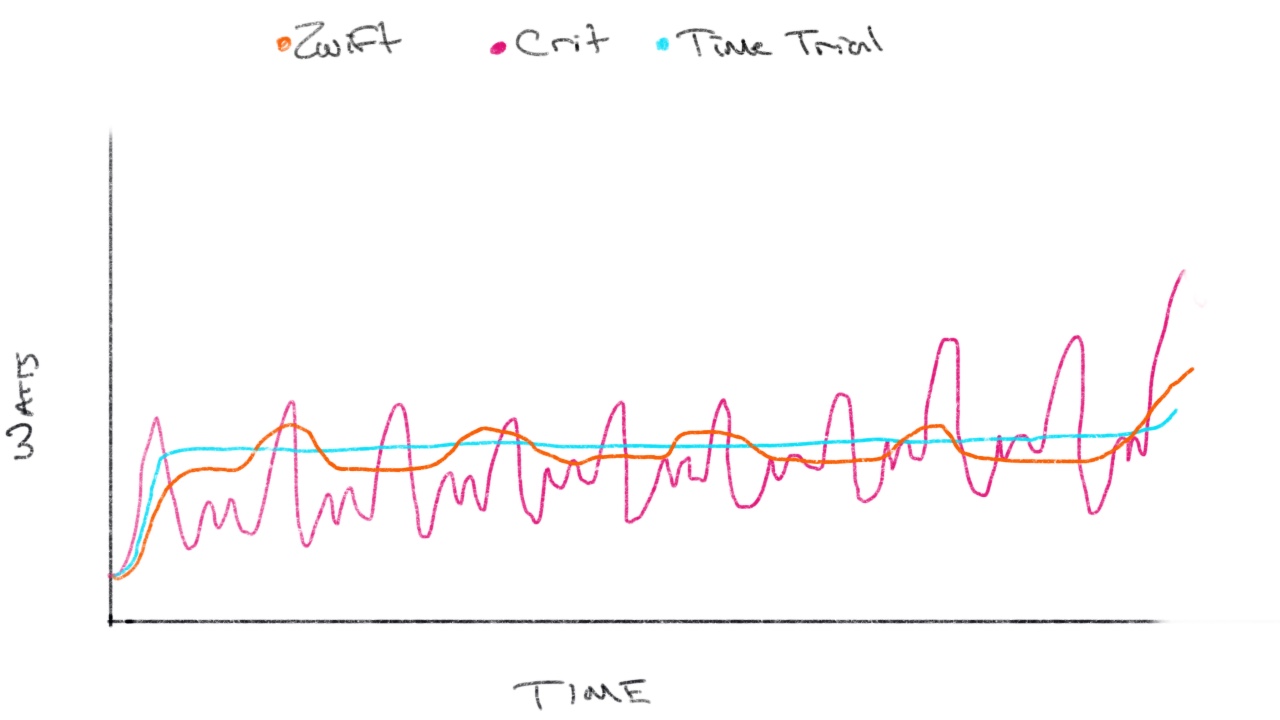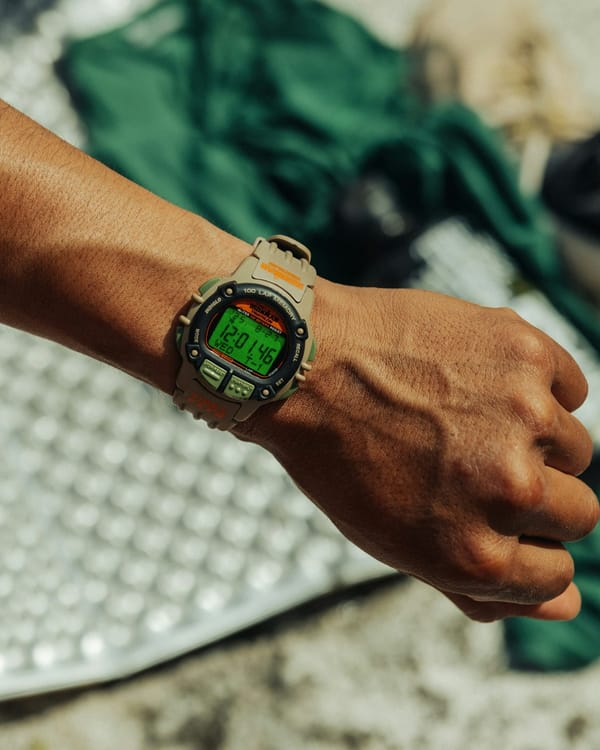Intro to Zwift Racing: Integrating Zwift Racing into Training, How to Win and Everything Else You Need to Know

Races and group rides on Zwift have grown like crazy over the past year. You can jump on and find a race with 30-50 participants per classification at just about any hour. Racing on Zwift allows for year-round competition. It’s safe. And from a training standpoint, it’s hard to argue with the mental effect of taking on other riders (whether in-person or not).
Why You Should Race on Zwift
To start, in colder climates it might just be the only way to race for a few months of the year.
It’s Engaging and a lot of Fun
For me, this is the only reason I need. I’ve got all the right training equipment, but staying engaged through the winter months is tough. TrainerRoad, for example, is a great training tool, but watching a line trace a graph will drain you mentally. I’ve had as engaging an experience with indoor training as I have racing on Zwift.
It’s a Great Workout
Racing is a great workout. Racing inside is no exception. I was skeptical whether the competitive effect would carry over to indoor racing, no longer. Training adaptation requires exposure to high-intensity efforts. Achieving time-at-intensity is hard during solo training. E-races makes it easier.
It’s Safe
You can’t crash on Zwift. The closest I’ve come to injury during Zwift racing was a pre-ride jaunt to the bathroom. My cleats hit the tile and that was that. I’ve seen a lot of scary crashes in crits and I’ve seen guys miss seasons due to concussions. Alternative racing has helped, but e-racing eliminates the risk altogether. For those of us with jobs and kids, safety can’t be understated.
It’s Convenient
Pump up the tires. Clean and lube. Mix a bottle or two. Suit up in kit. Strap the bike to the car. Drive across town in traffic. Race for 45 minutes. Go home.
Or
Walk to the basement. Throw on bibs. Turn on fan. Grab a bottle. Race. AT JUST ABOUT ANY TIME 24/7.
Integrating Zwift Racing into Training
Zwift racing, like real world racing, is a great training tool. It pushes you beyond your typical limits and gives you gobs of time at high intensity. But you have to be careful.
It’s pretty hard to overdo it with racing IRL. There are only so many events out there.
Zwift, however, allows you to group ride and race just about every hour of every day. You could race yourself into the ground with ease.
Integrate Zwift Racing into Your Weekly Workload
Personally, I use training stress score (TSS) to track my weekly workload on the bike. I use TrainingPeaks and TrainerRoad to do so (Zwift rides will integrate with either). Don’t go off time alone, you’re going to build a lot more stress in a much shorter time racing than you will doing even structured training.
Start Small and Build
I would start with one 60-90 minute e-race a week. It’s a similar workload to competing in a weekly crit and a good place to start. It also allows you to maintain time and intensity in your structured training. E-racing is unstructured and high-intensity, structured training with its more moderate-intensity work will help you get a full range of training. If you don’t want to do structured training group rides on Zwift are also great for steady state work.
Getting Started with Racing on Zwift
Assuming you’re already setup to ride on Zwift, you don’t need anything special to race, at most some races require a heart rate monitor. There are some things you should know though.
- Register on ZwiftPower: I highly recommend signing up at ZwiftPower if you’re going to race. ZwiftPower collates race results and allows race organizers to track results. For some races a ZwiftPower account is required.
- Find Your Category: Most race on Zwift are divided into categories by watts/kg. You can select any category when signing up for a race, but if you race down categories the organizer will most likely remove your result. Race the toughest category you’re ready for. It’s better training and you won’t risk having your result invalidated. The most commonly used scale is:
- A: 4.0 w/kg FTP or higher
- B: 3.2 w/kg to 4.0 w/kg FTP
- C: 2.5 w/kg to 3.2 w/kg FTP
- D: Under 2.5 w/kg FTP
- Read the Race Description: Race rules vary. Use the Zwift events website or the Zwift Companion App to read up on a race before you join up.
Get Ready to Race on Zwift
You’re signed up to race, now it’s time to prepare.
Assemble the Goods
Grab the following and make sure it’s all within reach from your bike.
- Towel
- Water bottles (filled)
- Nutrition (gels, bars, etc…)
Prepare the Area & Yourself
Get your fan blasting and start warming up 10-15 minutes before the race starts. My experience is that Zwift races start very hard. If you’re coming from gravel grinding or road racing, the start might throw you off, be prepared. The pace will come down, hang in there.
Tips for Success in Zwift Races
Zwift racing is different than any other type of racing I’ve experienced. The skills, tactics and efforts are much different. Here are some tips.
How the Race Will Go
 Don’t expect Zwift racing to feel like a crit. Zwift doesn’t simulate the hectic changes in effort of a crit. You can bomb into a 90-degree corner on Zwift at 35 mph without the slightest concern. In a crit, you’re hitting the brakes into every corner, accelerating like hell back out of it and doing that over and over again, lap after lap. Because of that, Zwift racing is far more steady state.
Don’t expect Zwift racing to feel like a crit. Zwift doesn’t simulate the hectic changes in effort of a crit. You can bomb into a 90-degree corner on Zwift at 35 mph without the slightest concern. In a crit, you’re hitting the brakes into every corner, accelerating like hell back out of it and doing that over and over again, lap after lap. Because of that, Zwift racing is far more steady state.
Racing on Zwift is somewhat like riding a time trial. Expect to start hard, settle into an effort and maintain. You’ll likely need to tick up the effort on climbs, though so don’t let down your guard. Expect a tough sprint to the finish as well.
Drafting in Zwift is Real
Anyone that’s drafted outdoors knows the incredible benefit it bestows. Replicating that on Zwift is a little bit of a trick. When you’re close enough to a rider in Zwift, your avatar will sit up, this is a visual indication that you’re in the slipstream. You can save approximately 25% of your power output in a draft. The tricky part is staying there. You don’t have brakes in Zwift, or the ability to sit up more to catch air to slow down. So you have to be much more proactive in maintaining position.
Turn Down Your Trainer Difficulty
Despite the name, this setting doesn’t change the amount of work necessary to ride on Zwift. Instead, it changes how responsive your smart trainer is to simulating gradients. Reducing the setting makes grades feel more steady and reduces the simulated effect which means you can maintain a higher cadence and don’t have to do quite as much shifting.
Know the Course
Knowing the course allows you to plan your attack. While crits are often about finding the turn you want to go on, Zwift is all about finding the climb you want to go on. Keep that in mind and plan accordingly.
Change Your Equipment
Equipment makes a difference in Zwift. As you ride in Zwift, you’ll earn Drops, the in-game currency. You’ll probably want to purchase a mix of aero equipment for flat races and lightweight equipment for climbing races .
Pay Attention
I’ve lost races in Zwift due to distraction (watching TV) more than once. You can’t read body language, so you have to watch for power spikes and time gaps. Just like IRL, gaps are really hard to close. Cover if you can, or hope you can organize a chase.
Enjoy
You aren’t going to take a ribbing in the parking lot while you pack up your bike because you had a bad day or because you didn’t take the perfect turn and pissed off some Fred. Just enjoy the racing.





